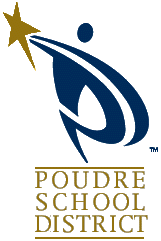


Colorado
State University (CSU) and Poudre School District (PSD)
Spatial
Information Technologies and Geographic Education Partnership
Fort Collins,
CO USA
This site has several ArcView-based GIS geography projects. The description of each project can be viewed by selecting the links. The actual ArcView projects and data must be requested for the projects to be sent to you on CD. Requests can be made by sending an e-mail to mell@cnr.colostate.edu
This project is supported through funding from Colorado State University, Poudre R-1 School District, and the National Geographic Society Education Foundation.
Spatial information technologies refers to various tools that inventory, assess, and analyze geographic information in a computerized environment. Basically, a geographic information system (GIS) allows the computer to "think" it is a map - a map with the ability to analyze geographic information and tell its users about any part of the world. A GIS specifies three characteristics about a location:
| where it is geographically (e.g., latitude and longitude coordinates) | |
| what it is (e.g., road, lake, well, city, etc.) and | |
| it's relation to other locations on the map |
Remotely sensed data (RS - satellite imagery, aerial photography) are an example of the types of information that a GIS may use for classification of vegetative types or land cover. Global positioning systems (GPS) allow the user to know where he/she is on the earth (e.g., latitude and longitude coordinates) by consulting a radio receiver and using the constellation of 24 satellites orbiting the earth.
These spatial information technologies have become fundamental tools of the geographer and provide new and innovative ways to think about the world. The cost of these technologies has decreased in the past few years, and the Internet is a vast resource for accessing public domain GIS software and RS data - not to mention manuals on GPS instruction.
One of the problems facing the use of spatial information technologies in the classroom is the availability of teacher training and time to develop appropriate lessons and exercises for students. To address this problem, the CSU-PSD Partnership was established. In June 1997, a workshop was held at CSU to introduce and demonstrate to teachers spatial information technologies, to explore potential avenues for implementation in K-12 classrooms, and to identify K-12 partners for a pilot project to be conducted during the fall semester of 1997.
Using the graduate class, NR 505 - Concepts in GIS, as the vehicle for collaboration, graduate students were partnered with K-12 participants to design exercises using spatial information technology in the classroom. Graduate students worked in teams of two and were partnered with seven different teachers to create hands-on exercises using such tools as GIS, RS, and GPS. Graduate students worked with K-12 partners to determine topics, content, and questions to be answered - keeping in mind the geography standards.
It is anticipated that this
project will continue year to year, partnering with different teachers
at different grade levels. With the potential of more schools acquiring
ArcView, partnering with K-12 teachers and graduate students will change
significantly. Exercises can be developed with the intention for K-12 students
to not only gain geographic education, but hands-on experience with GIS
software. In effect, graduate students can help to develop exercises with
K-12 teachers.
For further information,
contact:
Dr. Melinda Laituri
Department of Earth Resources
Colorado State University
e-mail:
mell@cnr.colostate.edu
(970) 491-0292
Colorado State University | Poudre School District | National Geographic Society